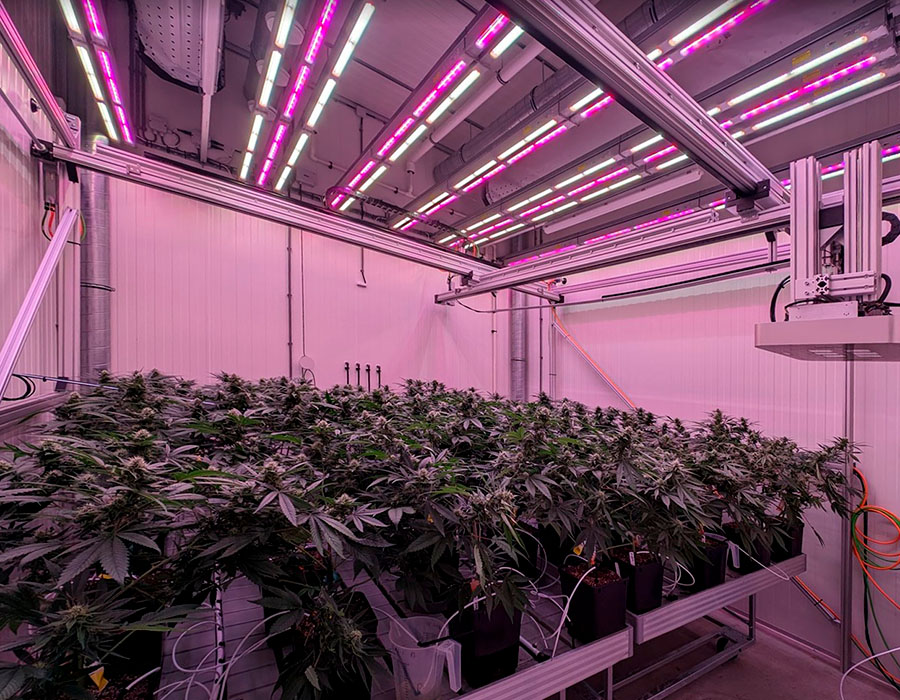- English

With a current growth cycle of 11-12 weeks, cannabis cultivators can’t afford to get their crops of to a poor start. An ample supply of high-quality starting material is essential to ensure uniform growth and dependable results. Taking cuttings from mother plants is the most reliable and efficient way of obtaining good starting material, according to Rene Corsten, crop consultant at Delphy and part of the MCPIR consortium: “Effective mother plant management requires time and attention, but it considerably improves a grower’s efficiency and supports scaling up.”
For the successful cultivation of uniformly high-quality medicinal cannabis, it is essential to have good-quality starting material. “The cannabis cycle is like a 100-meter sprint in athletics. A poor start ruins your chances in the rest of the race because there’s no time to make up for it. Low-quality plant material gives you a bad start and therefore an unsatisfactory end-result,” says Rene Corsten.
Three options for starting material
Depending on the rules in the specific country where they are operating, cannabis producers can generally choose between three options for obtaining starting material: seeds, tissue culture, and mother plants. “Seeds are easy to ship around the world , plus there’s a wide choice of available products. However, because there are not a lot of F1 hybrids available yet, batches of cannabis seeds can exhibit considerable heterogeneity. In other words, growers may receive a huge variation within a strain which can lead to differences during the cultivation process,” explains Corsten. “Additionally, when growers are sowing frequently to keep pace with the short cultivation cycle, seeds are cost-intensive in terms of both the purchase price and labor,” he continues.
Tissue culture is the second option, resulting in plants with good vigor and genetic uniformity. “Tissue culture is also excellent for storing your genetics, providing a safety net in case of facility-wide issues like viruses or viroids. But only a small number of companies offer plant material in this way right now and it is an expensive solution states Corsten.
The third option is for growers to take cuttings from mother plants that they have grown themselves. “The cuttings are clones of the mother plant, so growers know that they have a uniform variety. This is also a relatively cost-effective option,” he says.
Visual versus anatomical equality
Nevertheless, obtaining starting material from mother plants is not as straightforward as it might seem: “Many cannabis growers tend to wait until a mother plant is nice and full and then trim it bare in one go, perhaps once a month. This gives them cuttings that look visually identical – the same length, same number of leaves – but the anatomical inequality between the cuttings might differ a lot. To avoid this, the cutting should be equally old with the same leave length on each cutting. This ensures that all the cuttings are at the same stage of development and therefore anatomically identical.
Why is anatomical equality so important? “Cuttings that are anatomically different from one another will result in unwanted inequality in vigor between the plants, plus the failure rate in rooting is unnecessarily high – and this increases further with older mother plants,” he explains. “Therefore, growers should ideally take cuttings from their mother plants preferably at least 3 times a week, and change the mother plants after 20-30 weeks. To ensure a steady supply of cuttings from all varieties, growers may need to start a new mother plant growing cycle for a variety once every 6-10 weeks .”
It pays to invest time and attention
Corsten admits that good mother plant management requires more time and attention than the traditional approach to mother plants. “And just as in other aspects of crop cultivation, it can take growers a while to get a feeling for which cuttings are ready for harvesting today and which should be left on the plant for a few more days,” he says.
“But it’s worth the effort, because in the longer-term mother plant management can considerably improve your efficiency and support scaling up. For example, a constant supply of high-quality plant material enables you to increase plant density, refrain from topping, shorten the growth cycle due to less vegetative days. Hence you can harvest earlier, resulting in more crop cycles per year with an overall higher yield,” he adds.
This is particularly important in the medicinal cannabis industry, which is currently undergoing a wave of professionalization. “As MCPIR, our ambition is to support licensed companies through this transition by shortening the learning process for them. One way we are doing this is by conducting research, aimed at developing an industry blueprint for enhancing each aspect of the cannabis cultivation process,” comments Corsten.
Accelerating the path to success
“We are also bridging the gap between the cannabis industry and vegetable or ornamental crop production. For example, mother plant management has been standard practice in Chrysanthemum and other floriculture crops for many years. We can help to accelerate the path to success for cannabis growers by facilitating access to all that existing knowledge and experience, so that they don’t have to reinvent the wheel,” he adds.
“When setting up the MCPIR cannabis research trials, we ourselves faced the decision about which type of starting material to use. We’ve opted to start with mother plants – based on a good mother plant management policy, of course – and that’s our recommendation for commercial growing facilities too!” he concludes.
On June 10, MCPIR hosted a second event. The presentations on Climate strategy, Lighting and Measure your plants can be read back on the MCPIR website.